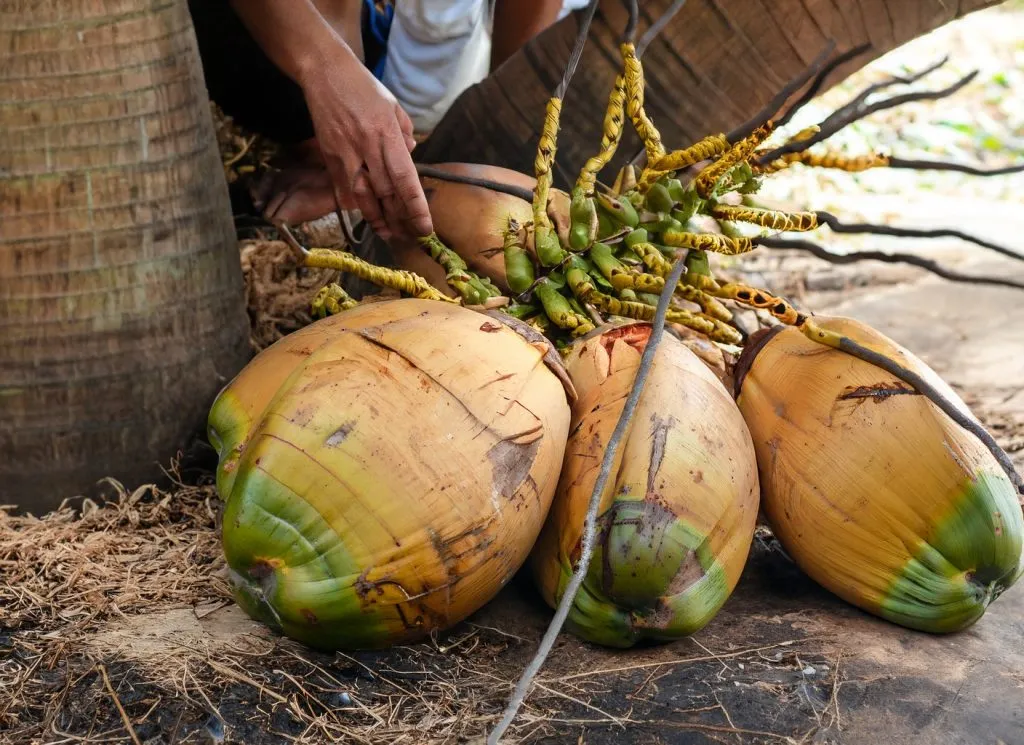The coconut palm, a symbol of the tropics, produces its treasured fruit year-round. But transforming this high-hanging fruit into the coconuts we purchase requires expertise and, often, a head for heights. Let’s unravel the harvesting process.
Recognizing the Right Time
While coconuts can be harvested at various stages of maturity for different purposes, identifying the right time is crucial. Young coconuts, often green, are harvested primarily for their water. Mature coconuts, which may have a brown husk, are picked for their meat.
The Art of Climbing
In many traditional settings, harvesters climb the tall coconut palms to pluck the fruit. Using simple tools or even their bare hands and feet, these skilled climbers ascend with agility, making the perilous task seem effortless.
Modern Mechanisms
With advancements in technology, devices like pole pruners or hydraulic lifts are now used in some larger plantations, ensuring safety and increasing efficiency.
Ground Collection
In certain regions, coconuts are allowed to mature and fall naturally to the ground. These fallen coconuts are then collected, a method that eliminates the need for climbing but may result in some loss or damage to the fruit.
Post-Harvest Processing
Once harvested, coconuts may undergo de-husking, where the outer fibrous layer is removed. They might also be cracked open to extract the meat or packaged as whole fruits for sale.
The process of harvesting coconuts is a blend of age-old traditions and modern techniques, reflecting the balance between respecting heritage and embracing progress.
For those keen on the post-harvest journey of coconuts, discovering how coconut oil is extracted and processed provides a deeper understanding of this versatile fruit’s value.
Previously Discussed: Explore more about the coconut’s lifecycle by diving into how coconuts reproduce.

